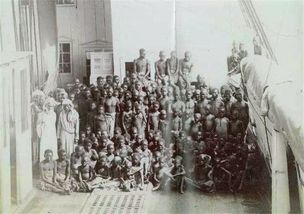Football Uniforms: A Comprehensive Guide
When it comes to football, the uniform is more than just a piece of clothing; it's a symbol of identity, pride, and tradition. Whether you're a player, a coach, or a fan, understanding the intricacies of football uniforms can enhance your appreciation for the game. In this article, we'll delve into the various aspects of football uniforms, from their history to the latest trends.
History of Football Uniforms

The history of football uniforms dates back to the early 19th century. Initially, players wore whatever they had available, which often meant a variety of colors and styles. However, as the sport gained popularity, teams began to adopt more uniform and standardized attire.
One of the earliest examples of a football uniform was the Cambridge University Football Club's blue and white striped shirts, which were introduced in the 1860s. These shirts were designed to differentiate the team from its opponents and to provide a sense of unity among the players.
As the sport evolved, so did the uniforms. In the late 19th and early 20th centuries, teams started wearing different colors to represent their regions or schools. For instance, the University of Michigan Wolverines adopted a maize and blue uniform in 1898, which has since become one of the most iconic in college football.
Materials and Construction

Over the years, the materials used to construct football uniforms have changed significantly. Early uniforms were made from wool, which was durable but not very comfortable. In the 20th century, synthetic materials like nylon and polyester began to replace wool, offering better breathability and flexibility.
Today, modern football uniforms are typically made from a blend of synthetic fibers, such as polyester and spandex. These materials provide a combination of strength, comfort, and moisture-wicking properties, making them ideal for the demands of the sport.
One of the key features of modern football uniforms is the use of moisture-wicking technology. This technology helps to keep players dry and comfortable by absorbing sweat and moving it away from the skin. This is particularly important during intense games, where players can sweat profusely.
Design and Aesthetics

The design of football uniforms is a crucial aspect of their appeal. Teams often incorporate their colors, logos, and mascots into their uniforms, creating a unique identity that fans can easily recognize.
One of the most common design elements in football uniforms is the use of stripes. Stripes can be horizontal, vertical, or diagonal, and they can be in a variety of colors and patterns. For example, the New England Patriots' uniforms feature a white and red color scheme with a diagonal striped pattern, while the Dallas Cowboys' uniforms feature a white and blue color scheme with a horizontal striped pattern.
Another popular design element is the use of numbers. Numbers are typically placed on the front and back of the uniform, and they help to identify individual players. The size and style of the numbers can vary, but they are usually consistent with the team's overall design aesthetic.
Functionality and Safety
In addition to aesthetics, football uniforms must also be functional and safe. One of the primary functions of a football uniform is to protect players from injuries. This is achieved through the use of padding and protective gear, such as helmets and shoulder pads.
Modern football uniforms are designed to minimize the risk of injury by providing players with a layer of protection. The padding is typically made from a combination of foam and gel materials, and it is strategically placed in areas where players are most likely to be hit.
Another important aspect of safety is the use of breathable materials. As mentioned earlier, moisture-wicking technology helps to keep players dry and comfortable, which can reduce the risk of heat-related illnesses.
Customization and Personalization
While most football uniforms are standardized, teams often offer customization options for players. This can include choosing different colors for the uniform, adding personal touches like player names or numbers, or even designing a custom uniform for special occasions.
Customization is particularly popular in high school and college football, where players often want to showcase their individuality. Some teams even offer fans the opportunity to purchase custom uniforms, allowing them to support their favorite team in a unique way.
Conclusion
Football uniforms are an integral part of the sport, representing the history, culture, and identity of each team. From their early beginnings to the cutting-edge technology used in modern uniforms, football attire has evolved significantly over the years. Whether you're a player, a coach, or a fan, understanding the various aspects of football uniforms can deepen your appreciation for the game.










